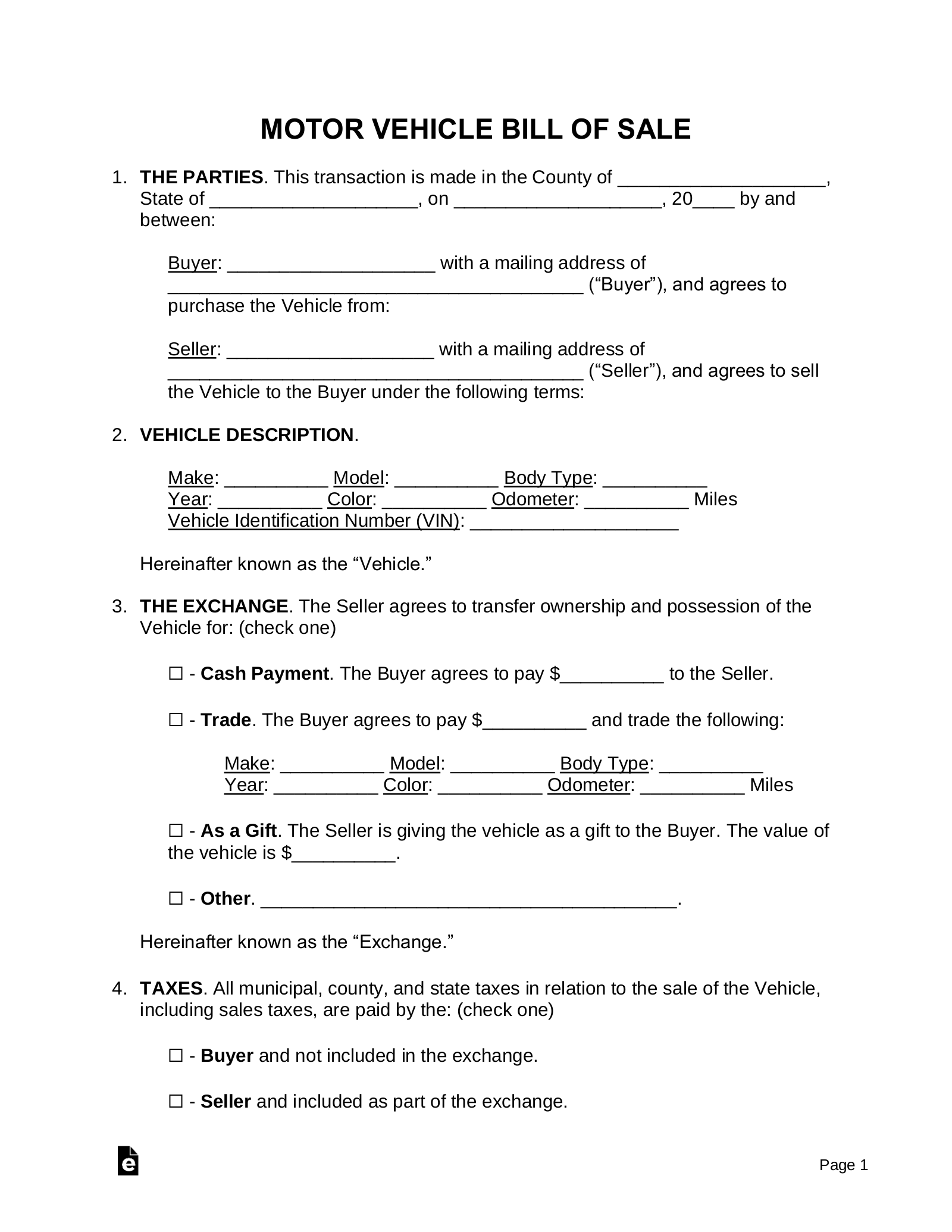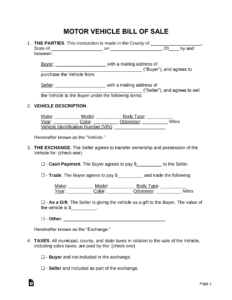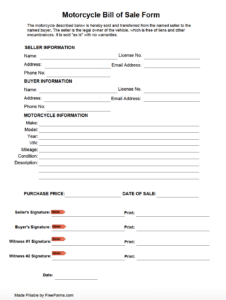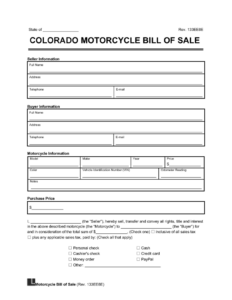Thinking about buying or selling a car, truck, or motorcycle? It’s an exciting time, whether you’re upgrading your ride or saying goodbye to an old friend. But amidst the thrill of a new set of wheels or the satisfaction of a successful sale, there’s a crucial piece of paperwork that often gets overlooked, yet it’s absolutely vital for both parties involved: the bill of sale. This simple document is far more than just a receipt; it’s your legal record of the transaction.
Without a proper bill of sale, you could find yourself in a tricky situation later on, whether it’s proving ownership, dealing with tax obligations, or resolving potential disputes. It provides clarity and protection, ensuring that both the buyer and the seller have a documented account of what was agreed upon. So, before you shake hands and exchange keys, understanding the importance and utility of a reliable bill of sale is key to a smooth and legally sound transaction.
What Makes a Bill of Sale So Important for Motor Vehicles?
A bill of sale for a motor vehicle acts as a legally binding document that records the transfer of ownership from one party to another. It serves as proof that the transaction took place, detailing all the critical information about the vehicle, the buyer, the seller, and the terms of the sale. This document is essential for a variety of reasons, protecting both parties from future misunderstandings or legal issues. It’s not just a formality; it’s a fundamental safeguard.

For the buyer, having a bill of sale is crucial for registering the vehicle with the Department of Motor Vehicles (DMV) or equivalent authority in your state or province. Without it, you might struggle to prove you are the new legal owner, which can prevent you from getting proper registration, plates, and even insurance. It also offers a layer of protection against future claims from the seller or any third parties regarding the vehicle’s ownership.
On the flip side, sellers benefit immensely from a bill of sale as well. Once the document is signed and the vehicle changes hands, it formally severs your ties with that specific vehicle. This is vital because it limits your liability for any incidents, accidents, or tickets that might occur after the sale. It also helps in notifying your insurance company that you no longer own the vehicle, allowing you to cancel your policy for that particular vehicle.
Ultimately, using a comprehensive bill of sale template for motor vehicle transactions brings peace of mind. It ensures all the necessary details are captured, preventing omissions that could lead to headaches down the road. It clarifies the “as-is” condition of the vehicle if applicable, the agreed-upon price, and the date of sale, leaving little room for ambiguity.
Key Information a Bill of Sale Should Always Include
To be truly effective, a bill of sale needs to contain specific pieces of information. Omitting any of these could weaken its legal standing.
- Vehicle Information: This includes the year, make, model, Vehicle Identification Number (VIN), odometer reading at the time of sale, and license plate number.
- Buyer Information: Full legal name, address, and contact details.
- Seller Information: Full legal name, address, and contact details.
- Sale Price: The exact amount of money exchanged for the vehicle.
- Date of Sale: The specific date the transaction occurred.
- “As-Is” Clause: A statement indicating if the vehicle is being sold “as-is” without any warranties, if that’s the agreement.
- Signatures: Both the buyer’s and seller’s signatures are paramount. Some states may also require a notary public’s signature.
Finding and Utilizing a Bill of Sale Template Motor Vehicle
In today’s digital age, finding a reliable bill of sale template for motor vehicle transactions is easier than ever. Numerous state DMVs, legal aid websites, and reputable online platforms offer free, downloadable templates tailored to specific state requirements. These resources often provide templates that are designed to comply with local laws, which can vary slightly from one region to another. It’s always a good idea to check your local DMV or Secretary of State’s website first to see if they offer a preferred template.
Once you’ve found a suitable template, the next step is to carefully fill it out. Accuracy is absolutely paramount here. Double-check all the details, especially the Vehicle Identification Number (VIN), which is a unique identifier for every car and crucial for registration. An incorrect VIN can lead to significant delays and complications with your DMV. Take your time to ensure all names, addresses, and the sale price are entered correctly.
Before signing, both the buyer and the seller should review the document thoroughly together. This is the moment to clarify any final questions and ensure that all terms and conditions are mutually understood and agreed upon. If the vehicle is being sold “as-is,” make sure that clause is clearly stated and understood by both parties, acknowledging that the buyer accepts the vehicle in its current condition with no guarantees from the seller.
After both parties have reviewed and confirmed the details, the document should be signed by both the buyer and the seller. It’s also wise to have the signatures witnessed, or even better, notarized, if required by your state or if you simply want an extra layer of legal authentication. Each party should receive an original copy of the signed bill of sale for their records. The buyer will need their copy for vehicle registration, while the seller will need theirs to prove they no longer own the vehicle, especially for insurance purposes and to avoid liability.
Having a properly completed bill of sale for a motor vehicle is an essential step that brings legitimacy and protection to the transaction. It ensures that both the buyer and the seller have a clear, documented record of the sale, preventing future disputes and streamlining the process of vehicle ownership transfer. Taking the time to use and complete this document correctly will save you headaches and provide peace of mind in what should be an exciting time.



